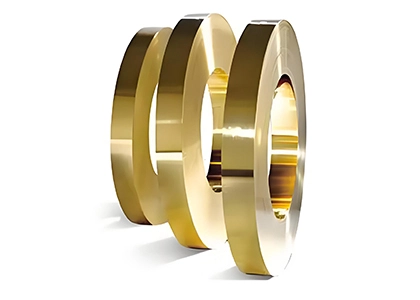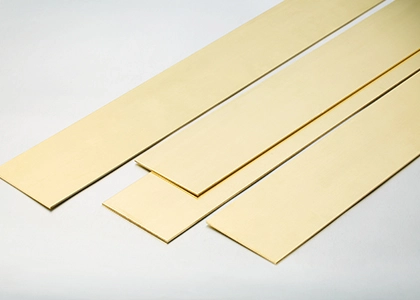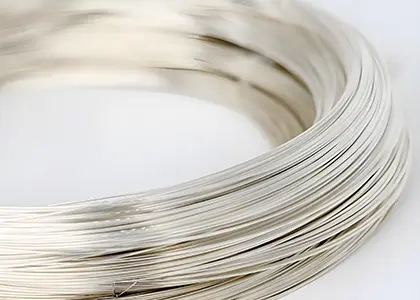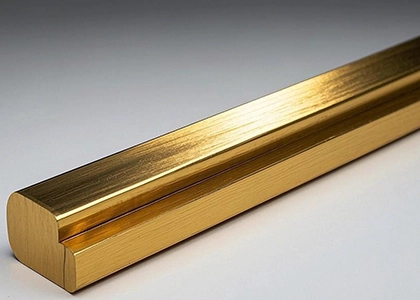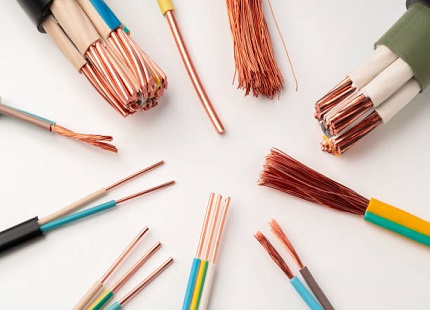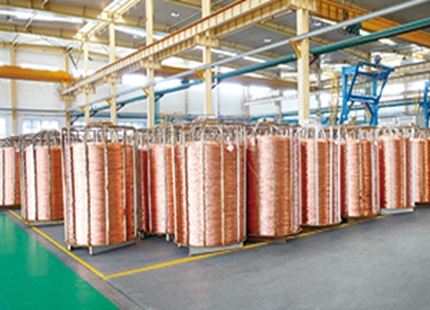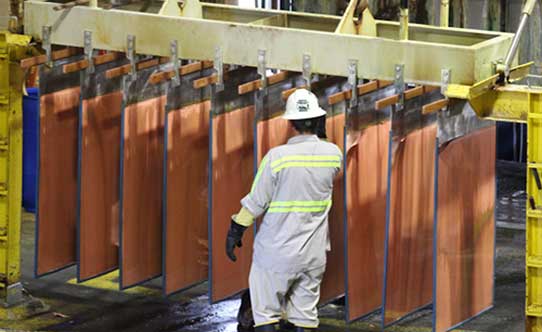Designation and Standards
Standard Designation: H60 (Common Brass)
International/National Standards: GB/T 5231-2012 (Wrought Brass), GB/T 4423-2007 (Bars)
Equivalent International Grades: ASTM C28000 (American Standard), JIS C2800 (Japanese Standard)
Material Category: Copper-Zinc Alloy (Cu-Zn), Copper Content 59.0%-61.0%, Zinc Balance (Approx. 39%-41%).
Product Features
Economic and Performance Balance:
Moderate copper content, lower cost compared to Alpha Brass (such as H62, H65), suitable for large-scale industrial applications.
Excellent Working ability:
Good cold and hot working ability, supports stamping, forging, and welding processes. Annealing is required after cold working to relieve stress.
Moderate Strength:
Tensile Strength ≥300 MPa, suitable for general structural components and non-high-load applications.
Limited Corrosion Resistance:
Moderate resistance to corrosion in freshwater and dry atmospheric environments. Prone to dezincification corrosion in humid or sulfur-containing environments.
Chemical Composition
Element | Cu | Zn | Pb | Fe | Total Impurities |
Content (%) | 59.0-61.0 | Remainder (Approx. 39%-41%) | ≤0.03 | ≤0.10 | ≤0.5 |
Physical Properties
Property | Value | Remarks |
Density | 8.4-8.45 g/cm³ | Advantageous for lightweight design |
Electrical Conductivity | Approx. 20% IACS | Suitable for general electrical applications |
Thermal Conductivity | 110-115 W/(m·K) | Suitable for heat dissipation components |
Coefficient of Thermal Expansion | 21.2×10⁻⁶/°C (20-300°C) | Good thermal stability |
Melting Point | 900-925°C | Moderate casting flow ability |
Mechanical Properties
Property | Value | Test Conditions |
Tensile Strength (σb) | 300-550 MPa | Varies significantly depending on processing state (M/Y) |
Elongation (δ10) | ≥8% (Y) | Up to 35% (M) |
Hardness (HB) | 75-100 | Higher hardness (Y) |
Annealing Temperature | 500-600°C (Conventional Furnace Annealing) | Eliminate cold work hardening |
Common Product Forms and Specifications
Product Form | Specification Range | Standard/Condition |
Plate | Thickness 0.5-50mm, Width 305-1000mm | Hot Rolling(R), Annealed (M), Hard (Y) |
Strip | Thickness 0.1-2.0mm | M, Y₂, Y |
Bar | Diameter 5-150mm, Length 2000-6000mm | Bright drawn and Black Round Bars |
Wire | Diameter 0.5-10.0mm | Coils or Straight Rods |
Tube | Outer Diameter 10-300mm, Wall Thickness 1.0-20mm | Cold Working or 1/2 Hard |
Core Application Fields
Construction Hardware: Door locks, hinges, general-purpose pipes (non-high-pressure applications).
Consumer Goods: Zipper heads, buttons, decorative hardware.
Industrial Components: Low-load bolts, washers, stamped parts.
Heat Dissipation Components: Simple heat sinks, ventilation ducts (non-high-thermal-conductivity applications).
Decorative Materials: Metal mesh, low-cost handicrafts.
Processing Considerations
Annealing Process: After cold working, anneal at 500-600°C to prevent stress corrosion cracking.
Welding Requirements: Prefer soldering and brazing or argon protected welding to prevent zinc evaporation and porosity.
Corrosion Protection: In humid environments, apply nickel plating or anti-corrosion coatings.
Machining: Due to low lead content, use sharp tools to reduce burr formation.
Frequently Asked Questions
Q: What is the difference between H60 and H59 brass?
A: H60 has slightly higher copper content (59%-61% vs. 57%-60% for H59), resulting in better plasticity but slightly lower strength. The cost is similar.
Q: Is H60 suitable for making shell casings or high-precision parts?
A: No, H60 has lower strength and plasticity compared to H68/H70, making it more suitable for low-load general-purpose parts.
Q: How can the corrosion resistance of H60 be improved in sulfur-containing environments?
A: Applying a tin plating or epoxy resin can effectively mitigate corrosion.
Reference Standards
Chemical Composition and Processing Specifications: GB/T 5231-2012, GB/T 4423-2007 (Bars)
Mechanical Property Testing: GB/T 228.1 (Metal Tensile Testing)
International Standards: ASTM B36 (Plates), JIS H3250 (Japanese Standard)
Note: The above data is compiled from various industrial standards and technical documents. Actual parameters may vary depending on manufacturing processes. Refer to supplier test reports for precise values.

 English
English 한국어
한국어 français
français Deutsch
Deutsch Español
Español italiano
italiano العربية
العربية tiếng việt
tiếng việt Türkçe
Türkçe ไทย
ไทย 中文
中文
